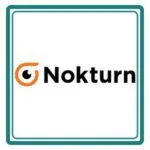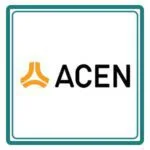Development of an HSE Management System Manual for an Oilfield Services Company in Al-khoud, Oman – A Case Study

Introduction
- Health, Safety, and Environment (HSE) compliance is a critical component for organizations operating in high-risk sectors like oil & gas, construction, and heavy equipment. A leading Al-khoud, Oman-based oilfield services company partnered with PopularCert to develop a robust, customized HSE Management System (HSE MS) Manual, aligned with industry best practices, PDO standards, and international HSE frameworks.
- This case study outlines the approach used, the scope of the HSE MS Manual, and the benefits delivered.
Client Overview
The client is an established provider of wellhead maintenance, workover rigs, wireline services, and other technical operations in Al-khoud, Oman’s oilfield sector. Operating in both onshore and interior regions, they are subject to strict contractual HSE obligations and Ministry of Environment regulations.
Objective
- Establish a structured and auditable HSE Management System
- Align the manual with PDO HSE specifications and ISO 45001/ ISO 14001 frameworks
- Ensure internal ownership of HSE responsibilities across all departments
- Support operational safety, risk control, and continual improvement initiatives
Our Approach
PopularCert worked closely with the company’s QHSE team and leadership to prepare a complete HSE Manual that:
Covered All Key HSE Elements:
- Leadership & Commitment
- HSE Policy, Objectives & Legal Compliance
- Roles, Responsibilities & Organizational Charts
- Hazard & Effects Management (HEMP)
- Emergency Response Planning
- Permit to Work (PTW), Toolbox Talks & Incident Reporting
- Monitoring, Review, and Audit Mechanisms
Integrated with Existing Operations:
- Tailored to existing workover rig operations, transport procedures, chemical handling, and environmental risks
- Mapped internal policies (e.g. STOP, DROPS, Road Safety, Waste Management)
- Incorporated requirements from ISO, PDO, and client-specific documentation
Developed in Phases:
- Phase 1: Data gathering and risk profile understanding
- Phase 2: Policy creation and procedure drafting
- Phase 3: Integration with legal references and site-level practices
- Phase 4: Final review, formatting, and approval by senior management
Deliverables
- A comprehensive HSE Management System Manual, version-controlled and ready for distribution
- Defined organizational responsibilities for HSE roles at all levels
- Procedures for HEMP, emergency preparedness, management of change, incident investigation, and more
- Visual charts and process flows for training and awareness
- References to legal requirements, PDO guidelines, and internal SOPs
Outcome
The organization now has:
- A fully documented, internally approved HSE MS
- Clear communication tools for employees, subcontractors, and stakeholders
- Standardized control over high-risk operations
- A foundation for ongoing HSE improvement and external audits
- Increased client confidence during HSE reviews and tender prequalification
Types Of Certification
- ISO Certification
- ISO 9001 Certification
- ISO 14001 Certification
- ISO 45001 Certification
- ISO 22000 Certification
- ISO 27001 Certification
- ISO 17025 Certification
- ISO 13485 Certification
- ISO 20000-1 Certification
- ISO 22301 Certification
- ISO 50001 Certification
- ISO 37001 Certification
- IATF 16949 Certification
- ISO 29001 Certification
- ISO 31000 Certification
- ISO 20121 Certification
- ISO 10002 Certification
- ISO 41001 Certification
Get Free Consultation
Our Clients


















How We Create HSE Manuals for Similar Companies?
PopularCert follows a proven 5-step process to develop HSE MS documentation for high-risk sectors:
Step 1: Initial Assessment
- Review of existing policies, procedures, and risk landscape
- Identification of legal and contractual HSE obligations
Step 2: Custom Manual Structure
- Define chapters based on ISO 14001/45001, OHS standards, and client needs
- Develop document hierarchy, codes, and revision control protocols
Step 3: Content Development
- Draft policies, responsibilities, communication structures, and hazard management steps
- Include company-specific risk scenarios, controls, and mitigation strategies
Step 4: Integration & Review
- Align content with current business processes and operational practices
- Review with client teams, implement feedback, and finalize the manual
Step 5: Delivery & Orientation
- Provide soft and hard copies with distribution lists
- Train internal stakeholders on implementation, updates, and audit readiness
Get Started Today:
With PopularCert’s support, the client now has a customized, robust HSE MS Manual that reflects their operational realities, reduces risks, and aligns with industry benchmarks. It’s not just documentation — it’s a foundation for safer, smarter business.
GET A FREE CONSULTATION NOW
FAQ
Is an HSE Manual mandatory for ISO 45001 or client contracts?
Yes. It serves as core documentation for both ISO 45001 and client audits (especially in oil & gas). It outlines how health and safety risks are identified, managed, and monitored.
Can one HSE Manual be used for multiple ISO standards?
Yes . when structured as part of an Integrated Management System (IMS), an HSE Manual can support ISO 14001 (environment) and ISO 9001 (quality) alongside ISO 45001.
How often should the manual be updated?
We recommend a review at least once a year or whenever significant changes occur in operations, legal obligations, or industry standards.
What is the typical timeframe for preparing an HSE MS Manual?
Depending on the company’s size and scope, development usually takes 2 to 4 weeks, including reviews and final approvals.
